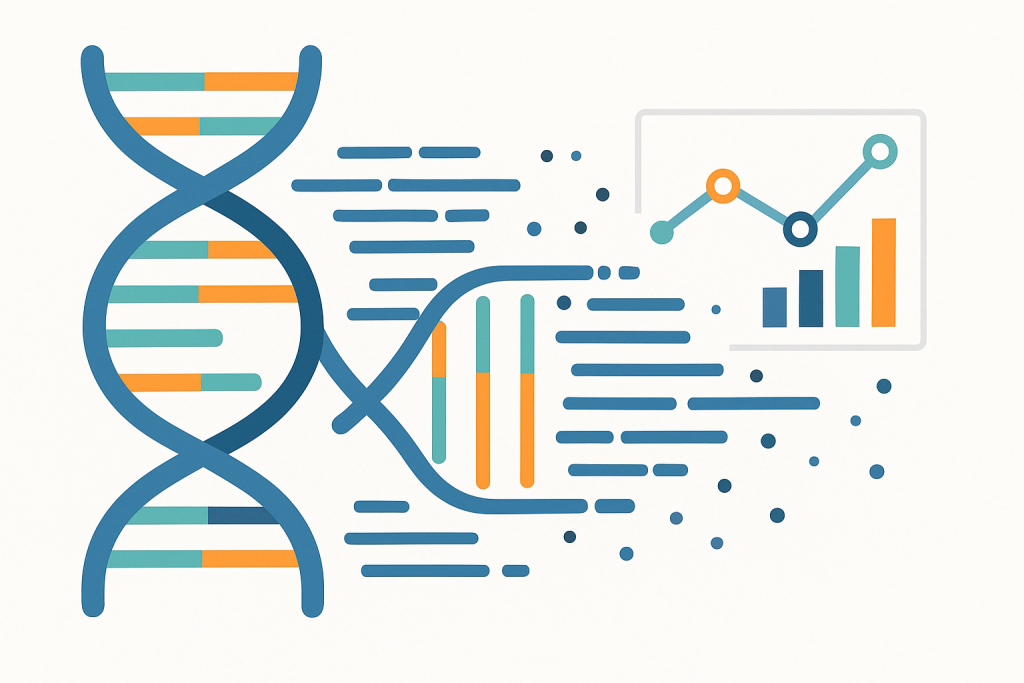Where biology meets data, a new kind of literacy begins.
What Is Bioinformatics — and Why It Matters in Schools
Bioinformatics is the science of understanding life through data.
It combines biology, computer science, and statistics to analyze massive datasets — from DNA sequences to climate patterns that affect ecosystems. In universities and research labs, it powers breakthroughs in medicine, genetics, and environmental science.
But today, this once-specialized field is becoming accessible to younger learners. With open-source datasets and easy-to-use coding tools, students in K–12 can now engage directly with real biological data, learning how digital analysis shapes modern science.
Bioinformatics isn’t just another STEM field — it’s a translation skill, helping students read life as information.
The New Literacy: From Microscopes to Databases
For generations, biology class meant microscopes and dissection trays.
Now, it’s also about databases and data visualization. Schools are beginning to teach students that biology is as much about information processing as observation.
Instead of only memorizing cell structures, students might:
- Analyze the DNA of different species using a simple Python notebook.
- Compare protein structures with open tools like Protein Data Bank (PDB) viewers.
- Study environmental biodiversity through satellite or sensor data.
This approach develops two essential literacies at once: biological literacy (understanding life) and data literacy (understanding systems). Together, they prepare students for the next era of scientific thinking.
Tools That Make Bioinformatics Accessible
Modern tools are making bioinformatics approachable, even for middle schoolers.
Educators are introducing interactive, web-based resources that allow students to explore biology through code — safely and visually.
Some examples include:
- NCBI and Ensembl: Free genome databases where students can explore genetic sequences.
- BioPython: A beginner-friendly Python library for analyzing DNA, proteins, and data patterns.
- Google Colab: Cloud notebooks that let students code without installing software.
- OpenBio datasets: Real biological and environmental data shared under open science licenses.
These platforms transform coding from an abstract skill into a tool for discovery, showing students that data can tell biological stories.
Connecting Coding and Life Science
Teaching bioinformatics bridges two traditionally separate subjects: biology and computer science.
Students learn to use logic, pattern recognition, and algorithms — all while investigating living systems. For example:
- Writing a loop to find a DNA motif teaches both programming syntax and genetic structure.
- Visualizing bacterial populations over time connects data analysis with ecological change.
- Building a simple classifier to sort protein types introduces machine learning concepts early.
This integration helps students see code as a lens for understanding nature, not just a technical tool.
Why It Belongs in K–12 Now
The world’s biggest challenges — from pandemics to climate change — are data problems as much as biological ones.
Early exposure to bioinformatics teaches students to navigate this complexity with curiosity and responsibility.
Key benefits include:
- Interdisciplinary thinking: Students learn to cross boundaries between science and technology.
- Hands-on relevance: Real-world data connects classroom concepts to authentic global issues.
- Career readiness: Emerging fields like genomics, biotech, and environmental analytics rely on this skillset.
Bringing bioinformatics to K–12 isn’t about turning students into researchers — it’s about preparing them to think critically in a data-driven world.
The Role of Educators: Guiding Curiosity with Care
Teaching bioinformatics requires more facilitation than instruction.
Educators don’t need to be experts in genetics or coding — they need to guide exploration. Many curriculum frameworks now include project-based models where students pose questions, find datasets, and write simple analyses.
Teachers can scaffold learning by:
- Pairing biology lessons with coding mini-labs.
- Encouraging group projects around local environmental data.
- Using visualization tools to make abstract data tangible.
The goal is not to teach every technical detail, but to help students understand that data is a living language of science.
The Takeaway
Bioinformatics brings science to life by turning data into discovery.
When students learn to analyze genetic sequences, environmental systems, or microbial patterns with code, they’re not just learning biology — they’re learning how to see the world through data.
Bioinformatics education in schools isn’t a future trend. It’s the next evolution of science literacy.


